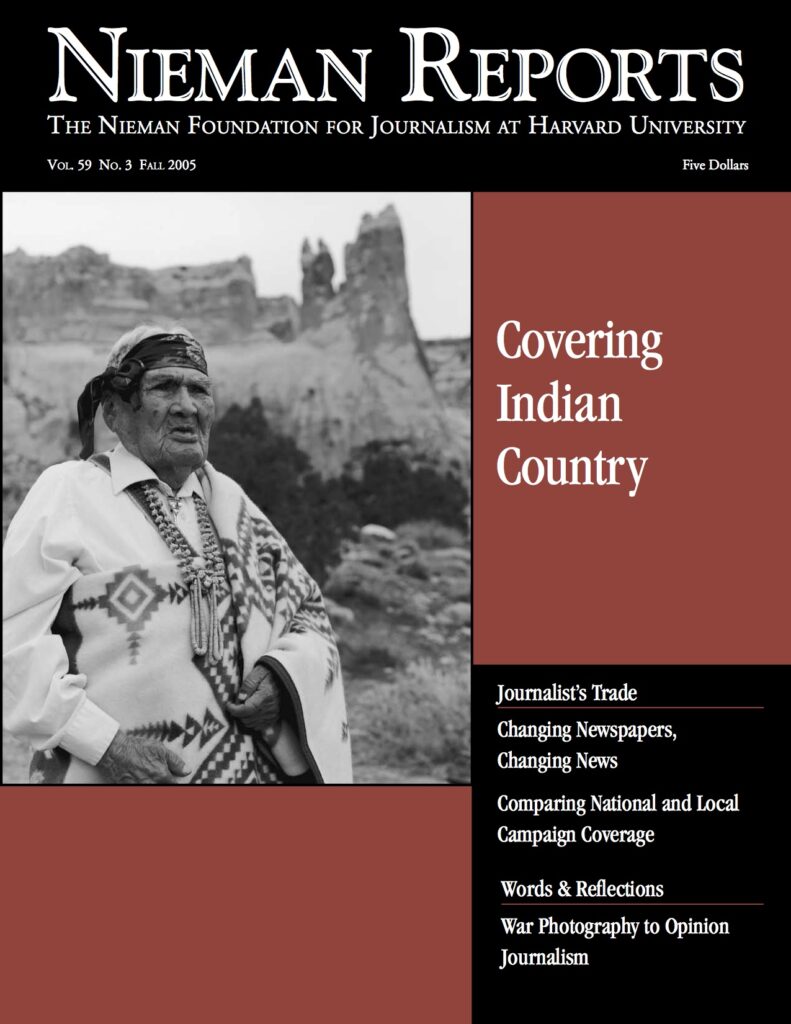In Minnesota the Chippewa were once one tribe—like the Sioux. So when they divided up or the government divided them up, they were broken apart into groups they called bands. The Sioux became the Lakota, Dakota and Nakota but, if they are looked at linguistically, they are of one group. The Chippewa in Minnesota also go by different designations—i.e. Anishinaabeg, Chippewa or Ojibwe. Chippewa is the official or Bureau of Indian Affairs term, but most of the people there use Ojibwe. Band, however, is used as the group name rather than nation or even tribe.
What ‘Band’ Means
Dorreen Yellow Bird offers an example to explain the correct use of the term “band.”
Covering Indian Country
As a young reporter at The Rapid City Journal, Tim Giago was seldom allowed to cover stories on the nearby Pine Ridge Indian Reservation where he was raised. As one editor told him, being Native American meant he could not be objective in his reporting. In 1981 he moved back to the reservation to start a community newspaper called the Lakota Times. At that time it was the only independently owned weekly Indian publication in the United States. In this collection of stories, Native Americans and non-natives who tell stories about the lives of Indian peoples talk about their obligation to fairness and the skills they need to live up to this responsibility.



